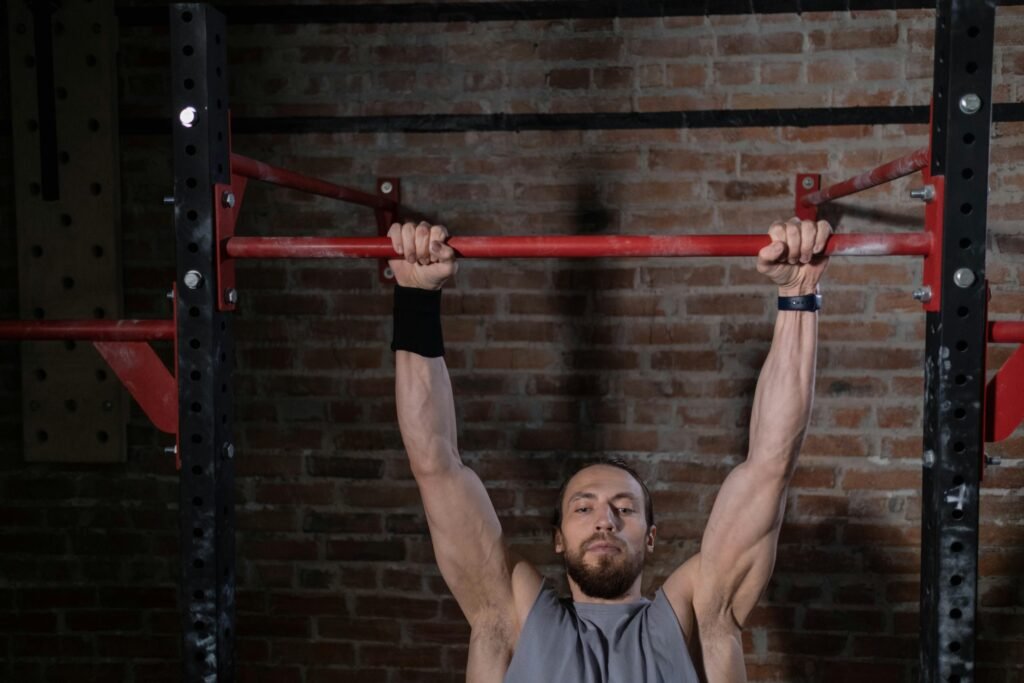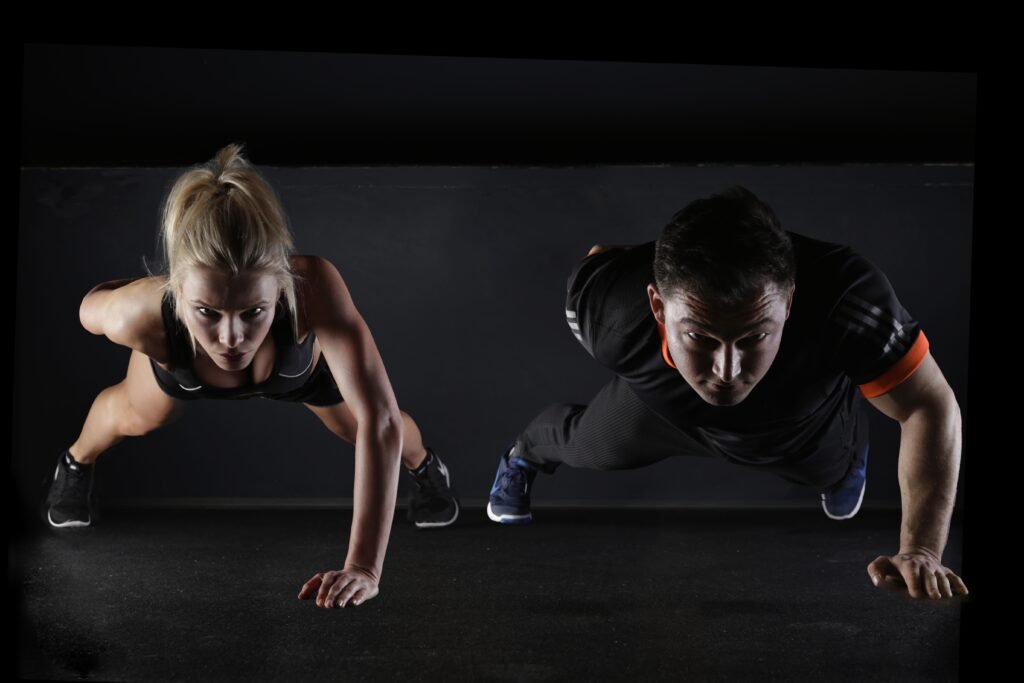Pull-Ups: The Ultimate Strength Test
Pull-ups are a cornerstone exercise in calisthenics and strength training, often seen as a test of pure upper-body strength and endurance. They involve lifting your entire body weight using your upper-body muscles, with minimal equipment required—a simple bar or sturdy surface does the trick. Though challenging for beginners, pull-ups are incredibly rewarding and versatile. They can help you build strength, enhance posture, and even boost your mental health. Whether you’re a fitness enthusiast or a beginner looking to level up your routine, pull-ups are a must-have.
Unmatched Benefits of Pull-Ups
1. Supercharge Your Grip Strength
Grip strength plays a vital role in everyday activities, from carrying groceries to opening jars, and is essential for athletes in sports like tennis, rock climbing, or golf. Pull-ups are one of the best exercises to develop this underrated strength. According to research, grip strength correlates with overall physical functionality and even predicts longevity (Journal of Strength and Conditioning Research).
2. A Complete Upper-Body Workout
Pull-ups are the epitome of efficiency. They simultaneously engage multiple muscle groups, including your lats, biceps, traps, and deltoids. The coordinated effort required from your muscles helps build upper-body strength and symmetry. Additionally, the movement promotes functional fitness, enhancing your ability to perform real-world tasks (Journal of Strength and Conditioning Research).
3. Torch Calories and Burn Fat
Pull-ups are not just about building strength—they’re great for weight loss too. Because they recruit large muscle groups, they burn calories efficiently, even after your workout ends. This process, known as the afterburn effect, boosts your metabolism for hours post-exercise (Journal of Strength and Conditioning Research).
4. Strengthen Your Mental Resilience
Physical challenges like mastering pull-ups have a psychological component. Overcoming the initial struggle to perform even one pull-up fosters discipline and mental toughness. Resistance training, including pull-ups, is shown to reduce anxiety and depressive symptoms, offering a natural way to uplift your mood (British Journal of Sports Medicine).
5. No Gym? No Problem!
Pull-ups are incredibly convenient, requiring only a bar or a sturdy surface like a tree branch or doorway pull-up bar. Their simplicity makes them an excellent choice for home workouts, outdoor routines, or travel fitness plans (ACE Fitness).
6. Boost Core Stability
While primarily known as an upper-body exercise, pull-ups also challenge your core muscles. Maintaining proper form—keeping your body stable and avoiding swinging—requires significant core engagement. This leads to better balance, posture, and overall functional strength (Journal of Strength and Conditioning Research).
7. Shape Your V-Taper Physique
If a broad, muscular back tapering down to a slim waist is your goal, pull-ups should be your go-to exercise. By targeting the lats and shoulders, pull-ups sculpt the highly coveted V-shaped physique. This look not only enhances your aesthetics but also improves your functional movement by strengthening stabilizing muscles (Journal of Applied Physiology).
8. Strengthen Your Bones
As a weight-bearing exercise, pull-ups help improve bone density. This is especially important as we age, reducing the risk of fractures and osteoporosis (Journal of Bone and Mineral Research).
9. Combat Back and Neck Pain
Pull-ups strengthen the muscles that support your spine, improving posture and reducing strain on your lower back and neck. They can also help reverse damage caused by prolonged sitting or poor posture (European Spine Journal).
10. Progression-Friendly
One of the best things about pull-ups is their adaptability. Whether you’re a beginner or an advanced athlete, there are variations to match your fitness level. Start with assisted pull-ups or negatives and gradually work toward full pull-ups or weighted versions for added challenge.
Step-by-Step Guide to Mastering Pull-Ups
Perfect Your Form
- Grip the bar slightly wider than shoulder-width apart.
- Pull your chest toward the bar, keeping your body straight and core engaged.
- Avoid swinging or using momentum—slow and controlled movements are key.
Start Small and Build Up
- Begin with assisted pull-ups using a resistance band or machine.
- Progress to negatives, where you focus on the lowering phase of the movement.
- Practice consistently, aiming for gradual improvements in reps and form.
Incorporate Variations
- Wide-Grip Pull-Ups: Emphasize your lats.
- Chin-Ups: Shift the focus to your biceps.
- Archer Pull-Ups: Build unilateral strength.
- Weighted Pull-Ups: For advanced athletes looking to maximize gains.
Add Pull-Ups to Your Routine
Include pull-ups in your workout regimen 2–3 times per week. Pair them with complementary exercises like rows and deadlifts for a complete back and biceps workout.
Pull-Ups vs. Other Exercises
Pull-ups stand out due to their simplicity and effectiveness. While machines and free weights are valuable, pull-ups challenge your body in a unique, functional way. Unlike machines, pull-ups require you to stabilize your entire body, improving coordination and balance. They’re also more accessible and cost-effective, as they require minimal equipment.
Conclusion
Pull-ups are more than just an exercise—they’re a symbol of strength, discipline, and perseverance. Incorporating pull-ups into your fitness routine offers unparalleled benefits, from building muscle and burning calories to enhancing mental resilience and promoting bone health. Whether you’re a fitness veteran or a beginner, pull-ups provide endless opportunities for growth and progression. So grab that bar and start your pull-up journey today—you won’t regret it.
References
- Faries, M. D., & Greenwood, M. (2008). The role of grip strength in predicting functional performance and muscle strength. Journal of Strength and Conditioning Research.
- Schoenfeld, B. J. (2010). The mechanisms of muscle hypertrophy and their application to resistance training. Journal of Strength and Conditioning Research.
- Rebar, A. L., et al. (2015). Physical activity’s effects on mental well-being. British Journal of Sports Medicine.
- American Council on Exercise (ACE). Strength Training Exercises: Pull-ups.



